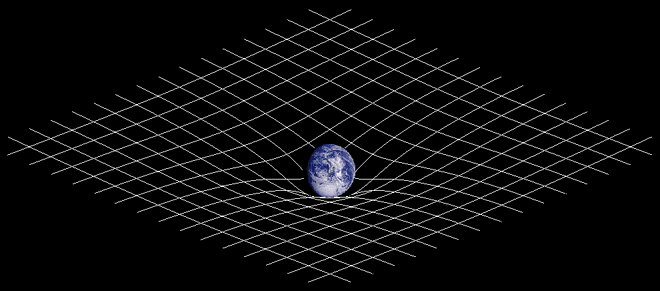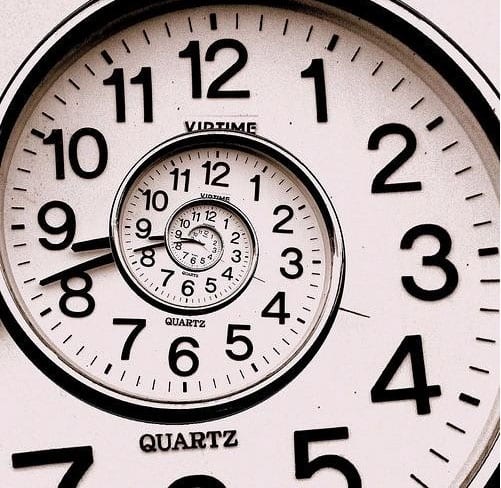What if I told you that the flow of time is an illusion due to our limited consciousness and that the only true distinction between the past and the future is the presence of heat?
You might call me crazy. However, it turns out that while the flow of time is obviously an essential part of our existence as human beings, there's not really a way to describe it with physics unless we bring heat and probability into the picture.
To clear this up, a few questions need to be answered.
What is heat, and how does it have anything to do with time?
James Maxwell and Ludwig Boltzmann discovered that atoms in hot substances move quickly, while atoms in cold substances move slower. We know today that heat goes from hot things to cold things. Why? The answer relates to the nature of time.
Here's how: in every instance when heat exchange does not occur, the future behaves exactly like the past. To grasp this idea, consider recording a video of a swinging pendulum. If there were no heat produced by friction, the pendulum would swing back and forth forever, and the video would look the same if we watched it forwards or backwards.
When we introduce heat (friction) to the system, the pendulum loses energy and slows down. Thus, we can distinguish its future from its past in the video because it slows down into the future. The main idea to take from this is that the phenomenon distinguishing the past and the future is heat passing from hot things to cold things.
Interestingly enough, the passing of heat from hot to cold things happens simply by chance rather than by absolute physical law. It is more likely that a fast-moving atom (like in a hot substance) will collide with a cold one and give energy to the cold atom. This means it's not impossible for a hot thing to get hotter by contact with a cold thing, it is just highly improbable.

In the 20th century, thermodynamics (the science of heat) and statistical mechanics (the science of the probability of different motions) were extended to include electromagnetic and quantum phenomena.
We know what it happens when we heat an electromagnetic field; consider an oven cooking a loaf of bread. The electromagnetic waves vibrate in the oven, and they randomly give some of their energy to the bread, which causes it to heat up. This makes sense.
However, problems arise when we try to understand heating up the gravitational field.
What is heated spacetime?
Albert Einstein gave us the knowledge that the gravitational field itself is spacetime. With this in mind, when the gravitational field is heated, both time and space must vibrate.
But… what in the world is vibrating time?
We have no way to answer this question. This leads us to the heart of the problem of describing time by using physics.

Why is the concept of time so problematic?
To answer this question, we must first ponder what the “present†is.
In physics, there is nothing that really corresponds to the notion of “now.â€
Compare the words “now†and “here†– you would never say that only things here exist, and not elsewhere. So why do we say that only things now exist; that the past does not exist anymore and the future is yet to exist?
The way we think of the present makes it seem as though it is something that flows on through time and produces events one after another. However, special relativity tells us that the idea of the present is just as subjective as the notion of “here.â€
Basically, this means that the present common to the whole universe is an illusion, and the flow of time is a false generalization.
But if it is not reality, then where does our perception of the flow of time come from?
The answer lies in the connection between time and heat! As mentioned before, heat is linked directly to probability. Through studying quantum mechanics, we have learned that we perceive the universe through a probabilistic lens: when we observe the universe, it behaves differently on the quantum level than if we did not observe it.

The flow of time, then, emerges in the context of statistics and thermodynamics, and not in an exact description of the way things are throughout the universe.
Limitations on our consciousness lead to our blurred vision of the world around us, and this is what gives rise to our perception of the passing of time.
 Paige Copenhaver is an undergraduate studying Physics and Astronomy at the University of Georgia. When she is not studying solar-type stars, she can be found playing ukulele or reading Lord of the Rings. You can email her at pac25136@uga.edu or follow her on twitter: @p_copenhaver. More from Paige Copenhaver. Paige Copenhaver is an undergraduate studying Physics and Astronomy at the University of Georgia. When she is not studying solar-type stars, she can be found playing ukulele or reading Lord of the Rings. You can email her at pac25136@uga.edu or follow her on twitter: @p_copenhaver. More from Paige Copenhaver. |
About the Author
- athenssciencecafehttps://athensscienceobserver.com/author/athenssciencecafe/April 17, 2020
- athenssciencecafehttps://athensscienceobserver.com/author/athenssciencecafe/April 12, 2020
- athenssciencecafehttps://athensscienceobserver.com/author/athenssciencecafe/April 3, 2020
- athenssciencecafehttps://athensscienceobserver.com/author/athenssciencecafe/March 30, 2020







